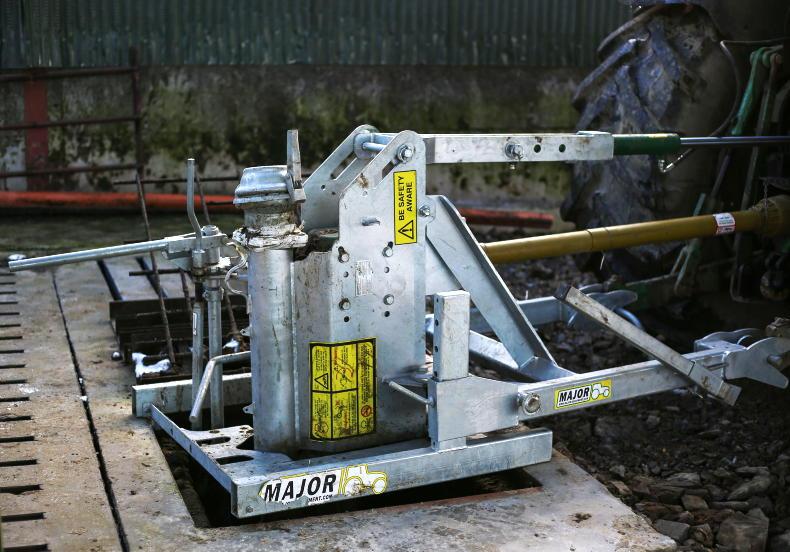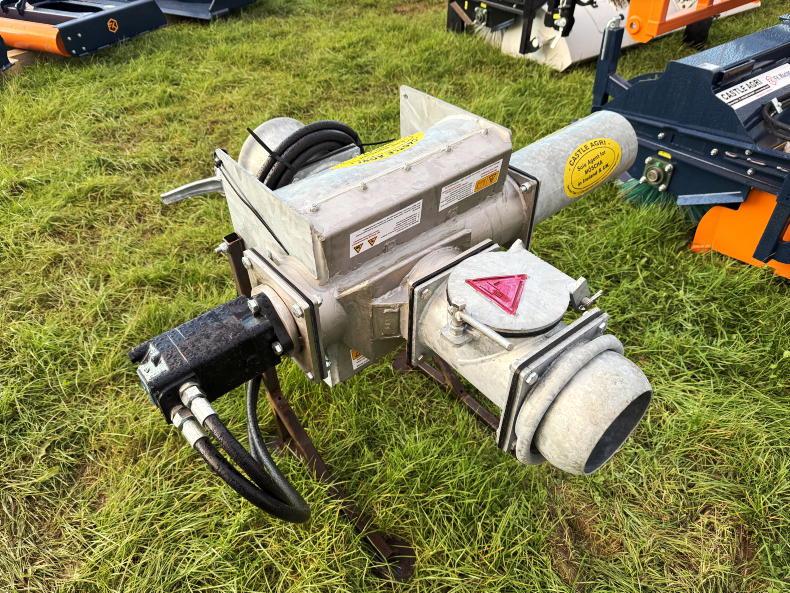Agitation points are a necessary requirement in tanks to allow the mixing of slurry, but they are a structurally weak point in a tank and due care needs to be taken in both their use and in building and repairing them.
Location
Agitation or extraction points should not be located internally. Doing so puts both livestock and operators at risk. Agitation points within cattle pens puts animals at risk of falling in to degraded or improperly closed agitation points, while having the points internally means that operators of agitators will be located inside the building when agitation commences, putting them at risk of harmful gases.
Agitation points should be located so that the slurry tanker does not have to pass over any slats while the tank is
being emptied (to reduce the strain
placed on slats and extend their working life).
Failing to do this may result in slats having to be replaced before their normal working life expectancy.

Where an agitation point is located between the sides of two buildings, there should be a minimum of 6m clear space between the two buildings, including between any roof overhangs.
Where an agitation point is located between the sides of two buildings, there should be a minimum of 6m clear space between the two buildings, including between any roof overhangs.
External agitation points are now defined as being outside of the roofed area, including outside of any canopy or overhang of a building.
Where the agitation point lies between two gables, this spacing increases to 9m.
The reason for this is to allow for
good air flow in and around the agitation points.
Length of tanks
In tanks more than 16m long (3 x 4.8m bays, with agitation point at one end), external agitation points shall be installed at both ends of the tank, However, it is strongly recommended that any tank longer than 11m should have an external agitation point at both ends too, meaning a standard three bay tank listed above would have two agitation points. A pipe circulation system can also be installed in lieu of this requirement, or a simple aeration system. However, the Department also does not recommend aeration systems for cattle being fed baled silage or where there is a risk of bedding being mixed with slurry from creep areas or lie-backs. Tanks should extend at least 1.2m beyond the end of a building to provide sufficient length to install an agitation point, though extending the tank to 1.5m beyond the building is recommended.
Spine walls
and pillars
Any object within the internal area of a tank can affect agitation, so for ease in agitation and for structural reasons, (in particular the problem of full foundation support), pillar-and-beam type construction should preferably be avoided.
Where pillar-and-beam type construction is used it is recommended that all pillars be circular.
It is strongly recommended that solid spine walls, with openings, shall be constructed for the support of slats and suspended passages, however, pillar-and-beam type construction is permitted.
It is strongly recommended that all internal wall corners be rounded.
The Department also recommended that spine walls (whether fully solid or of pillar and beams) be positioned along the centre line of the tank.
It is recommended that the space at each end of the wall should either be half the tank width or as wide as the wider of the tank divisions formed by by the spine wall.
Agitation points are a necessary requirement in tanks to allow the mixing of slurry, but they are a structurally weak point in a tank and due care needs to be taken in both their use and in building and repairing them.
Location
Agitation or extraction points should not be located internally. Doing so puts both livestock and operators at risk. Agitation points within cattle pens puts animals at risk of falling in to degraded or improperly closed agitation points, while having the points internally means that operators of agitators will be located inside the building when agitation commences, putting them at risk of harmful gases.
Agitation points should be located so that the slurry tanker does not have to pass over any slats while the tank is
being emptied (to reduce the strain
placed on slats and extend their working life).
Failing to do this may result in slats having to be replaced before their normal working life expectancy.

Where an agitation point is located between the sides of two buildings, there should be a minimum of 6m clear space between the two buildings, including between any roof overhangs.
Where an agitation point is located between the sides of two buildings, there should be a minimum of 6m clear space between the two buildings, including between any roof overhangs.
External agitation points are now defined as being outside of the roofed area, including outside of any canopy or overhang of a building.
Where the agitation point lies between two gables, this spacing increases to 9m.
The reason for this is to allow for
good air flow in and around the agitation points.
Length of tanks
In tanks more than 16m long (3 x 4.8m bays, with agitation point at one end), external agitation points shall be installed at both ends of the tank, However, it is strongly recommended that any tank longer than 11m should have an external agitation point at both ends too, meaning a standard three bay tank listed above would have two agitation points. A pipe circulation system can also be installed in lieu of this requirement, or a simple aeration system. However, the Department also does not recommend aeration systems for cattle being fed baled silage or where there is a risk of bedding being mixed with slurry from creep areas or lie-backs. Tanks should extend at least 1.2m beyond the end of a building to provide sufficient length to install an agitation point, though extending the tank to 1.5m beyond the building is recommended.
Spine walls
and pillars
Any object within the internal area of a tank can affect agitation, so for ease in agitation and for structural reasons, (in particular the problem of full foundation support), pillar-and-beam type construction should preferably be avoided.
Where pillar-and-beam type construction is used it is recommended that all pillars be circular.
It is strongly recommended that solid spine walls, with openings, shall be constructed for the support of slats and suspended passages, however, pillar-and-beam type construction is permitted.
It is strongly recommended that all internal wall corners be rounded.
The Department also recommended that spine walls (whether fully solid or of pillar and beams) be positioned along the centre line of the tank.
It is recommended that the space at each end of the wall should either be half the tank width or as wide as the wider of the tank divisions formed by by the spine wall.










SHARING OPTIONS